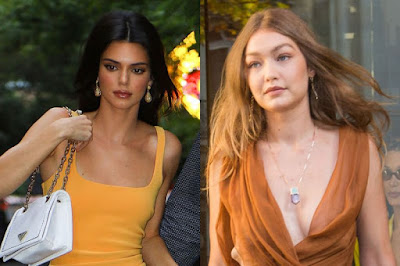Last August Riccardo Tisci, Givenchy's creative director, made Ibiza the festive epicenter of the fashion industry. There he celebrated his fortieth birthday surrounded by models, artists and celebrities of all kinds. The island reached, among others, Naomi Campbell and Kate Moss, Anna Dello Russo and Natasha Polly, Kim Kardashian and Kanye West. Months later, the festive fashion compass has set other coordinates. Dubai, one of the seven emirates that make up the United Arab Emirates, is roaring again after a five-year period of languishing splendor and economic crisis. The effects of the great recession have illuminated a new reality in which luxury greens less ostentatiously. Friends who never abandoned him and new visitors have put Dubai back into orbit.
The last days of December, various profiles on social networks confirmed the good news by geolocation. Designer Olivier Rousteing, Balmain's creative director and responsible for Kimye's latest triumph in fashion, traveled to the Dubai emirate to spend the end of the year. It was followed by a large army of models led by Gigi Hadid and Kendall Jenner, two of the professionals who achieved the most success last year. The first was the star of the last Sports Illustrated bathroom special and in October she starred in one of the covers of our magazine. In 2014 he paraded for dozens of signatures and Guess signed her for his campaign next spring. The latest media and professional surprise from America's most famous clan, Kendall Jenner has earned a place in fashion in her own right. In February she made her debut on the catwalks with Marc Jacobs and soon took the covers of Love or Dazed & Confused. In autumn few were the companies that did not use it to present their summer collections of 2015.
CELEBRITIES
Gigi Hadid and Kendall Jenner were not alone in Dubai. In recent weeks models like Josephine Skriver, Dev Windsor or Chanel Iman have joined the endless party of the Persian Gulf. The singer Selena Gómez or the actress Shay Mitchell (Pretty little liars) also passed by. Many of them coincided in the place to celebrate New Year's Eve, although they also had time to visit mosques, practice water sports or pose dressed in the hijab (scarf) and the abaya, the robe worn by women in some Arab countries.
The choice of Dubai as a new place of recreation is not accidental. In 2008, the emirate woke up from the sweet glow that led to the oil fields found in 1966, a trifle compared to those of neighboring Qatar. After several decades in which infrastructure development and commercial openness played a dominant role, the first years of the 21st century were decisive in underpinning its identity: skyscrapers and artificial islands allowed Dubai to lean on tourism to succeed. However, the global crisis showed the fragility of an economy that was too dependent on the desire to party in the West. A succulent loan from the Sheikh of Abu Dhabi and the arrival of foreign investors re-oiled the machinery in 2011.





























